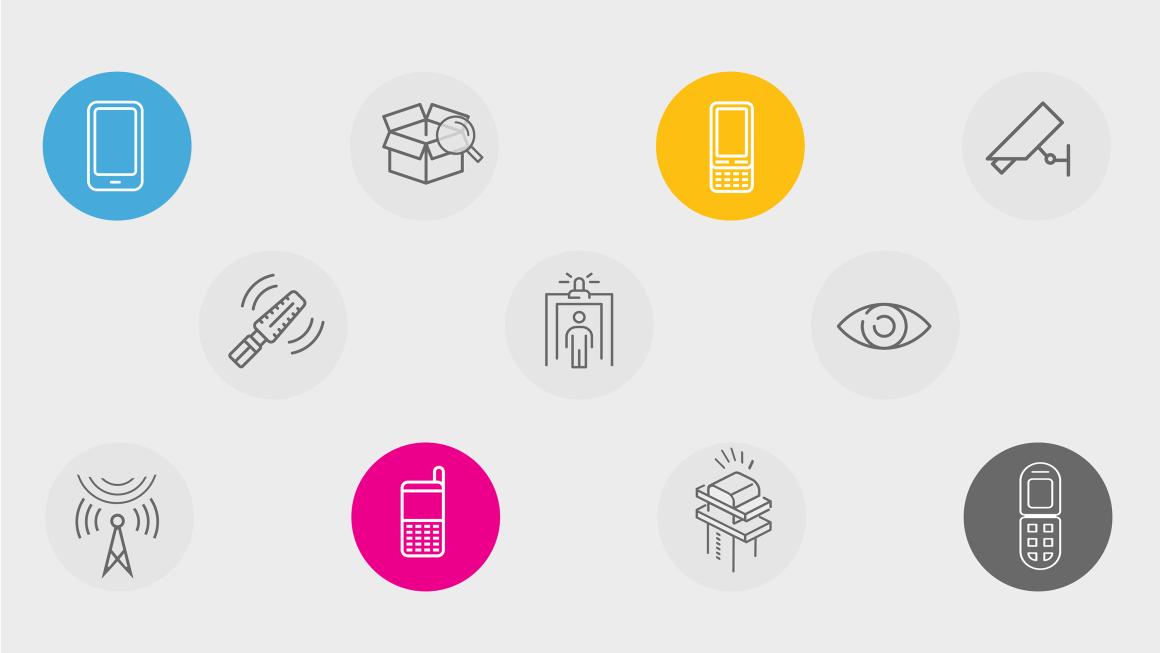
Contraband cell phones in correctional settings are more than just a nuisance to correctional staff—they can facilitate criminal activity, pose security risks to facilities, and undermine public safety. But little information exists on the scope of the problem, which can hinder effective solutions that meet each state correctional agency’s needs.
To help bridge the knowledge gap, Urban researchers and partners conducted a first-of-its-kind study of 20 state prison systems about the prevalence of contraband cell phones. From this survey, we surfaced two recommendations for state Departments of Corrections (DOC) leaders to better understand the extent of contraband cell phones and what strategies are available to combat the problem.
1. Assess the level of threat to prisons and public safety
Our survey found the contraband cell phone problem is widespread and likely larger than we know. Correctional administrators revealed that more than 25,000 cell phones were recovered across 20 state prison systems in 2020. However, the number of recoveries varied wildly, with some states reporting fewer than 20 and others reporting more than 6,000. Because these figures only account for recovered phones, we can deduce that the true number of contraband phones is likely much higher.
Correctional administrators widely agree that contraband cell phones pose a serious threat, with more than 85 percent of survey respondents indicating that these devices jeopardize the security of facilities and the safety of incarcerated individuals and staff. Additionally, nearly 70 percent of respondents believe that cell phones pose a significant risk to public safety. Yet, few facilities have the resources to find out how phones are used, whether for calling family or for criminal activities.
DOC leaders can better understand the prevalence and threats of contraband phones by relying on multiple information sources, such as intelligence from informants, media reports, and the recovery of related paraphernalia, like chargers. To best allocate resources, DOC leaders must clearly understand the problem’s severity. Sometimes too many resources are allocated in areas where the safety risk is low, or not enough resources are allocated where contraband cell phones pose a significant threat.
2. Determine how and where contraband cell phones enter a facility to adopt effective strategies
To effectively reduce the number of contraband cell phones in prisons, correctional staff must understand the various ways these devices enter facilities. This recommendation may sound like a no-brainer, but tracking cell phones has proven difficult.
Almost all facilities use surveillance cameras and metal detectors for regular security and contraband checks. But people still find ways to bypass these security measures or have cell phones brought in through unknown means. In some cases, DOC employees may act as conduits for smuggling contraband. Cell phones being thrown into prison premises from perimeters and flown in using drones have also been identified as serious challenges.
Some of these problems have simple solutions, such as mandatory staff checks at every entry point or mandatory see-through bags. Others may require more complex changes, including new technologies like drone detection.
However, many technological strategies are expensive to procure and maintain, and there are few efficacy evaluations available, leading officials to rely on vendor marketing and word of mouth. Without a clear assessment of the prevalence and impact of contraband cell phones, officials can fall prey to one-size-fits-all solutions that employ ineffective, expensive technologies unfit for the challenge.
Correctional officials need more information
Urban’s survey makes it clear that state correctional officials need more information and support from policymakers to fill knowledge gaps. Many respondents said they wanted more information on effective strategies, staff training, current federal regulations, and potential policy changes and revisions. State prisons want to solve the issue, but they need more support from policymakers.
Let’s build a future where everyone, everywhere has the opportunity and power to thrive
Urban is more determined than ever to partner with changemakers to unlock opportunities that give people across the country a fair shot at reaching their fullest potential. Invest in Urban to power this type of work.